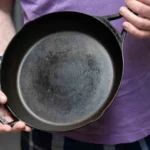With their captivating hues and charm, purple flowering plants can breathe life into any garden aesthetic. They exude calm sophistication and attract pollinators such as bees and butterflies. Whether nestled amongst neutral-toned perennials or paired with bold blooms, these plants offer exquisite contrast and interest. For U.S. homeowners and garden enthusiasts—particularly women who seek both beauty and functionality in outdoor spaces—purple blooms are a meaningful addition to any landscape.
Why Purple Flowering Plants Resonate with Garden Enthusiasts
Purple symbolizes peace, creativity, and mystery, which makes it a favored choice in home gardens aimed at creating calm retreats. These plants serve more than just an ornamental function; they contribute to atmosphere, seasonality, and even spiritual aesthetics in a way that feels intentional rather than overwhelming. Additionally, purple flowering plants come in a range of tones—from rich violets to soft lavenders—offering flexibility for diverse design styles, from rustic cottages to structured Zen retreats.
In warmer regions like the South or Southwest, purple flowers can soften the sunbathed landscape, while in cooler zones, they add vibrancy to short summers. With thoughtful placement and maintenance, purple blooms can last through multiple seasons, making them versatile and valuable.
Best Purple Flowering Plants for Color and Longevity
Lavender (Lavandula angustifolia)
A quintessential choice for gardens seeking a calming atmosphere, lavender provides silvery foliage and fragrant purple spikes. This Mediterranean native thrives in full sun and well-draining soil, making it ideal for home gardens from California to Connecticut.
- Bloom time: Early to mid-summer
- Sunlight: Full sun
- Soil requirement: Well-drained; prefers alkaline conditions
- Bonus: Naturally repels mosquitoes and deer
Its aromatic properties have made it a long-time favorite not only in gardens but also in home décor and wellness routines—think homemade sachets or centerpiece arrangements.
Salvia (Salvia nemorosa)
Salvia offers tall, spiry purple blooms that can thrive in a variety of climates across the United States. It’s both drought-tolerant and pollinator-friendly.
- Bloom time: Late spring to early fall
- Maintenance: Deadhead regularly to encourage longer bloom periods
- Perfect for: Borders, container gardens, and low-maintenance beds
If you're adding drama to a small garden or compact balcony, pairing salvia with other vertical growers can help amplify limited space—a strategy also recommended for climbing flowers for petite gardens.
Lilac (Syringa vulgaris)
The lilac shrub brings a nostalgic charm to outdoor spaces, often reminding us of childhood gardens or early spring days.
- Bloom time: Mid to late spring
- Fragrance rating: Intense and sweet
- Spacing: Needs generous breathing room to flourish
Lilacs are most impactful when used as anchor plants in hedgerows or near windows where their scent can drift indoors.
Bougainvillea
While bougainvillea is more commonly known for its vivid pinks and reds, certain cultivars like ‘Barbara Karst Purple’ and ‘Purple Queen’ stand out with paper-thin purple bracts.
- Climate needs: Thrives in Zones 9-11
- Ideal use: Trellises, walls, or hanging containers
- Pro tip: Moderate drought tolerance once established
To master bougainvillea care, refer to our bougainvillea plant care guide for detailed pruning and feeding tips.
Unique Selections with a Dramatic Edge
Not every garden is meant to be soft and pastel. Some homeowners lean into deeper, bolder colors, especially when building a moodier look. Purple flowering plants like clematis or black hellebore edge closer to a dramatic appeal—often layering beautifully with black flowers for dramatic garden appeal.
Clematis ‘Jackmanii’
This climbing vine produces masses of deep amethyst flowers and does particularly well when allowed to climb trellises or fences.
- Bloom time: Early summer to late fall
- Maintenance: Loves ‘cool feet, warm face’—shade the roots, give the blooms sun
- Design tip: Use with wooden arbors to create vertical interest and shade
Clematis are excellent candidates for use with flowering climbing vines for arbors, offering old-world elegance for any landscape.
Balloon Flower (Platycodon grandiflorus)
This Asian native opens from balloon-shaped buds into starry purple blossoms, often surprising new gardeners.
- Bloom duration: Mid to late summer
- Features: Minimal pest issues, long-lasting blooms
- Best in: Cottage gardens or whimsical flowerbeds
Balloon flowers pair well with silver foliage or dainty whites like those found in tiny white flowers for subtle beauty.
Adding Purple with Texture and Form
Color alone does not make a plant stand out. Texture, form, and leaf shape significantly impact how the purple plays across your landscape.
Agapanthus (African Lily)
Agapanthus offers tall stalks topped with spherical clusters of indigo to violet flowers.
- Use: Striking borders or centerpiece in containers
- Soil preference: Rich, well-drained
- Bonus: Easy to overwinter indoors in colder climates
Their vertical rise and sculpture-like look make them especially popular among modern garden layouts, including modern Victorian house transitions.
Verbena bonariensis
A darling among pollinator gardens, this plant forms clusters of small purple blooms on slender stems that gently sway in the breeze.
- Visibility: Tall yet airy—ideal for mid-to-back rows
- Wildlife benefit: Attracts butterflies and beneficial bugs
- Maintenance level: Low
Their movement and structure bring life even to static garden borders, pairing beautifully with olive trees for texture—a topic discussed in growing olive indoor for fresh air.
Caring for Purple Flowering Plants Across Seasons
Maintaining vibrant color across multiple months takes planning and proper care. Most purple flowering plants benefit from the following basic care strategies:
- Fertilization: Opt for balanced, slow-release fertilizers in spring
- Watering: Adjust based on soil type and sunlight—lavender loves dry environments, while balloon flower prefers consistent moisture
- Deadheading: Essential for continued blooming in species like salvia and verbena
- Mulching: Helps maintain moisture and reduce weed growth while insulating root systems
Adding certain plants doesn’t mean complicating care routines. In fact, for those just starting out, our best outdoor plant choices for beginners outlines species that don't require a green thumb.
Design Tips for Incorporating Purple into Garden Layouts
When organizing garden beds or patio containers with purple blooms, contrast and cohesion must work hand-in-hand. Purple pairs elegantly with:
- Silver or gray foliage (like licorice plant—see licorice plant tips for gardeners)
- White flowers for crisp definition
- Bright yellows or oranges as bold opposites
- Pale pinks for soft and romantic palettes (get ideas from caring for a pink magnolia tree)
Using repeated tones across borders and pots creates visual rhythm. For those working with restrictions of space or season, layering texture and stature—like pairing lavender with tall salvia—can maximize visual impact without overcrowding.
Final Thoughts
Purple flowering plants add sensory depth, emotional calm, and visual richness to a garden, making them an invaluable part of any thoughtful outdoor design. Whether planted in clusters for impact, scaled across vertical features, or mixed into cottage displays, these consistently reward the home gardener with color, fragrance, and grace. Their adaptability within different climates, styles, and garden sizes ensures there's a purple plant suited for every vision. As the seasons shift and gardens mature, these blooms continue to pop—with beauty that complements both nature and human touch.



